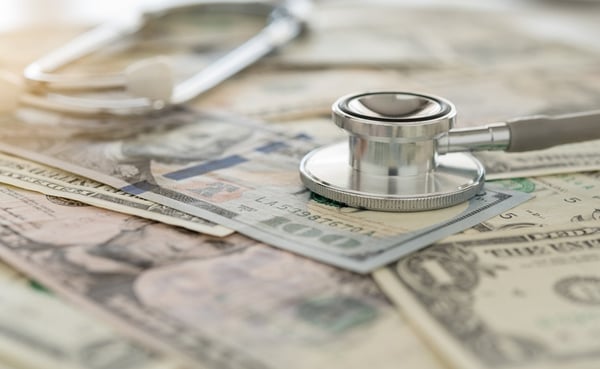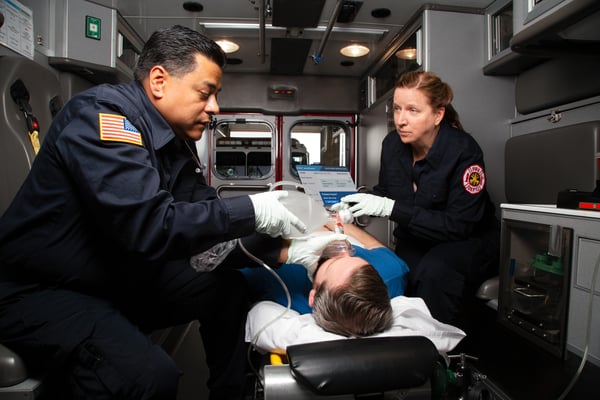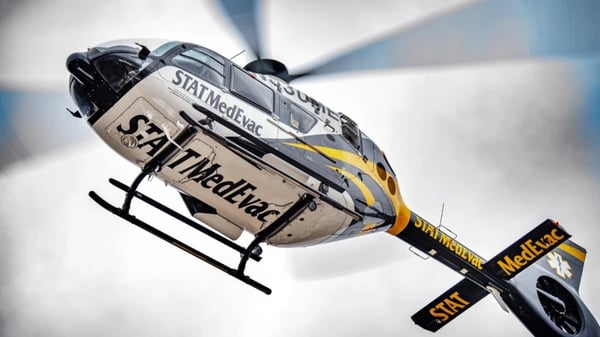News Alert: New ePCR Integration Simplifies EMS Data Management and Enables Better Care Coordination
Show Me the Money! How to Maximize Payment for Community Paramedicine
“Show me the money” echoed by Cuba Gooding Jr
Was this information valuable?

“Show me the money” echoed by Cuba Gooding Jr. in the hit movie Jerry Maguire, is a great quote to echo that work well done deserves compensation. Well, in the days of transition of EMS toward Mobile Integrated Healthcare/Community Paramedicine (MIH/CP) this age ole adage has once again become a current day mantra; all of EMS needs the business of healthcare to “show them the money” for MIH/CP services.
The successful transformation has proved to be a valued added skill that has truly moved the work into the third phase of transformation for MIH/CP.
- Phase One – was how do we develop community paramedic programs, train our providers and prepare our organizations for this new healthcare environment?
- Phase Two – what patients could we help, how to engage physicians, develop partners in hospitals, get that much-needed seat at the table, and find the best way to engage and recruit community resources?
- Phase Three – how do we create revenue streams to support sustainment? Now that programs have been conducting successful programs, how do we get paid for the services.
Stop the Reliance on Medicare Reimbursement
 As I engage with EMS departments on the development of MIH/CP programs the number one concern I hear is that Medicare isn’t reimbursing for these services. Our reliance on Medicare reimbursement has blinded our career field to the other great opportunities that certainly can present for funding. There are some great leaders in EMS, currently working diligently, to ensure Medicare eventually bellies up to the bar, and pays for MIH/CP services. To be honest with you that is a bit risky…. the Chicago Cubs may also win another World Series.
As I engage with EMS departments on the development of MIH/CP programs the number one concern I hear is that Medicare isn’t reimbursing for these services. Our reliance on Medicare reimbursement has blinded our career field to the other great opportunities that certainly can present for funding. There are some great leaders in EMS, currently working diligently, to ensure Medicare eventually bellies up to the bar, and pays for MIH/CP services. To be honest with you that is a bit risky…. the Chicago Cubs may also win another World Series.
Does that mean there is no revenue stream to reimburse for these services?
So, with that said, does that mean there is no revenue stream to reimburse for these services? I am here to tell you, there is available revenue streams that will effectively support continued work but will create sustainability for this new service. The challenge is we need to engage with payers; whether that be facilities, insurance companies, home health care organizations or private foundations, and we need to start the conversation with presenting our service as a business.
EMS has always considered itself a provider of healthcare in the form of a service. In the days of MIH/CP we need to take more of a business approach to this new service. When hospitals look at developing a new service line, it eventually always comes back around to money. How much will it cost and how much will we make. It’s time for EMS to represent the work, be transformational and thought leaders as we create the fee schedule and present this new skill in a business plan that represents MIH/CP as a “new service line” support the success with data and secure funding. The reality of the work we preform is we are the answer to the emergency department (ED) overcrowding, the observation hour’s increase and the avoidable ED visits. The business plan needs to present as such.
One day the Chicago Cubs will win another World Series, and maybe Medicare will pay for the services our Community Paramedics render. My contention is this will be more of an added incentive for agencies, then a primary revenue stream.
Connect with Partners to Find New Revenue Streams for Community Paramedicine Services
Healthcare is in an ever-changing environment. Hospitals are getting penalized every quarter for poor patient outcomes and patient readmissions while insurance companies are paying top dollar for ambulance trips, ER visits and professional fees for patients to receive care in unnecessary settings. Accountable Care Organizations (ACOs) are currently struggling to stay connected as the ease of decreasing the spend per patient isn’t so easy. Their revenue stream will become effected because they can’t decrease the spend on their patient base. It’s connecting with these partners that will allow EMS to develop the new revenue stream.
Hospital/Hospital Systems – Payment partnerships with hospitals and facilities can come in the form of per patient enrollment arrangements for programs implemented that will affect penalties such as readmissions, and spend per beneficiary for Medicare patients. In addition, all facilities assume bad debt related inability for patients to pay whether non or underinsured. Because of these penalties, it has affected – in some cases severely – many hospitals bottom line.
Focused CP programs can direct work toward the reduction of high utilization for hospitals, which is a significant financial driver for that facility. You can look for reimbursement based on a per patient, or even per patient per month, directly to the EMS agency.
Insurance Models – Payment partnerships can take the form of direct payment to work on projects that will support the patient prior to going to the emergency rooms. You can also create programs to support discharged patients to ensure successful transition from hospital, ED, or skilled facility or rehab to home.
ACOs – work in the ACO space will need to include partnerships with ACO to develop direct payment in agreement to reduce the overall spend per beneficiary payment. The focus can take many forms such as reduction in avoidable ED visits, prolonged hospital stays, quality measures on adherence to medication for all attributed lives. This payment structure can as well include a bonus model related to pre negotiated financial/quality/success corridors.
There’s the Money
There are millions and millions of dollars out there for funding this new service line. I’m here to contend that EMS needs to stop its dependency on a funding source that pay what they want, and begin to develop those contracted relationships that other healthcare providers have been taking advantage of for years. Learning the language, understanding the challenges these potential payers face and developing the needed partnerships will in fact show you the money.
Related Posts
4 Must-have Data Points for Dispatch-Billing Alignment and Maximum Reimbursement
How STAT MedEvac Connected Device, Software, and Data Technology To Enhance QA and Elevate Care
ZOLL Pulse Blog
Subscribe to our blog and receive quality content that makes your job as an EMS & fire, hospital, or AR professional easier.
ZOLL Pulse Blog
Subscribe to our blog and receive quality content that makes your job as an EMS, fire, hospital, or AR professional easier.




